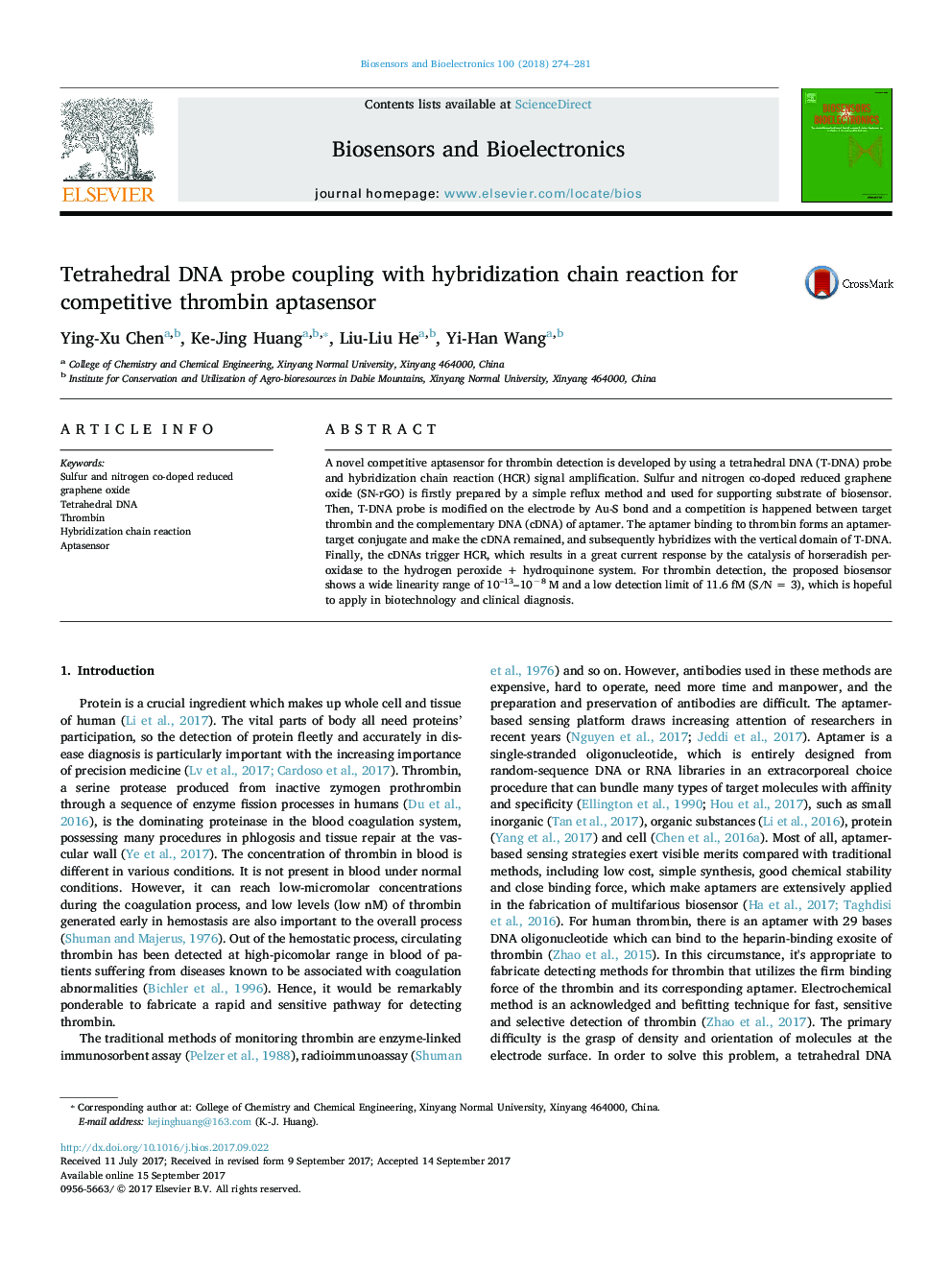| Article ID | Journal | Published Year | Pages | File Type |
|---|---|---|---|---|
| 5030790 | Biosensors and Bioelectronics | 2018 | 8 Pages |
Abstract
A novel competitive aptasensor for thrombin detection is developed by using a tetrahedral DNA (T-DNA) probe and hybridization chain reaction (HCR) signal amplification. Sulfur and nitrogen co-doped reduced graphene oxide (SN-rGO) is firstly prepared by a simple reflux method and used for supporting substrate of biosensor. Then, T-DNA probe is modified on the electrode by Au-S bond and a competition is happened between target thrombin and the complementary DNA (cDNA) of aptamer. The aptamer binding to thrombin forms an aptamer-target conjugate and make the cDNA remained, and subsequently hybridizes with the vertical domain of T-DNA. Finally, the cDNAs trigger HCR, which results in a great current response by the catalysis of horseradish peroxidase to the hydrogen peroxide + hydroquinone system. For thrombin detection, the proposed biosensor shows a wide linearity range of 10-13-10â8Â M and a low detection limit of 11.6Â fM (S/N = 3), which is hopeful to apply in biotechnology and clinical diagnosis.
Related Topics
Physical Sciences and Engineering
Chemistry
Analytical Chemistry
Authors
Ying-Xu Chen, Ke-Jing Huang, Liu-Liu He, Yi-Han Wang,
